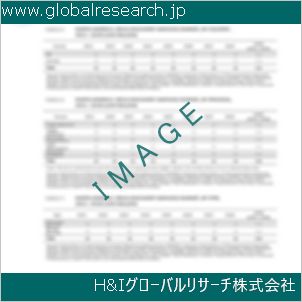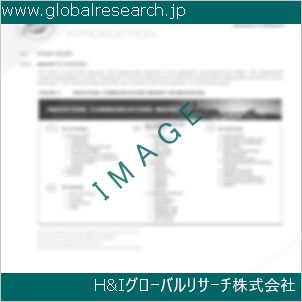1 Electrically Conductive Compounds Market Overview
1.1 Product Definition
1.2 Electrically Conductive Compounds Segment by Type
1.2.1 Global Electrically Conductive Compounds Market Value Growth Rate Analysis by Type 2022 VS 2029
1.2.2 Carbon Black Compound
1.2.3 Graphene
1.2.4 Others
1.3 Electrically Conductive Compounds Segment by Application
1.3.1 Global Electrically Conductive Compounds Market Value Growth Rate Analysis by Application: 2022 VS 2029
1.3.2 Electronics
1.3.3 Chemical Industry
1.3.4 Other
1.4 Global Market Growth Prospects
1.4.1 Global Electrically Conductive Compounds Production Value Estimates and Forecasts (2018-2029)
1.4.2 Global Electrically Conductive Compounds Production Capacity Estimates and Forecasts (2018-2029)
1.4.3 Global Electrically Conductive Compounds Production Estimates and Forecasts (2018-2029)
1.4.4 Global Electrically Conductive Compounds Market Average Price Estimates and Forecasts (2018-2029)
1.5 Assumptions and Limitations
2 Market Competition by Manufacturers
2.1 Global Electrically Conductive Compounds Production Market Share by Manufacturers (2018-2023)
2.2 Global Electrically Conductive Compounds Production Value Market Share by Manufacturers (2018-2023)
2.3 Global Key Players of Electrically Conductive Compounds, Industry Ranking, 2021 VS 2022 VS 2023
2.4 Global Electrically Conductive Compounds Market Share by Company Type (Tier 1, Tier 2 and Tier 3)
2.5 Global Electrically Conductive Compounds Average Price by Manufacturers (2018-2023)
2.6 Global Key Manufacturers of Electrically Conductive Compounds, Manufacturing Base Distribution and Headquarters
2.7 Global Key Manufacturers of Electrically Conductive Compounds, Product Offered and Application
2.8 Global Key Manufacturers of Electrically Conductive Compounds, Date of Enter into This Industry
2.9 Electrically Conductive Compounds Market Competitive Situation and Trends
2.9.1 Electrically Conductive Compounds Market Concentration Rate
2.9.2 Global 5 and 10 Largest Electrically Conductive Compounds Players Market Share by Revenue
2.10 Mergers & Acquisitions, Expansion
3 Electrically Conductive Compounds Production by Region
3.1 Global Electrically Conductive Compounds Production Value Estimates and Forecasts by Region: 2018 VS 2022 VS 2029
3.2 Global Electrically Conductive Compounds Production Value by Region (2018-2029)
3.2.1 Global Electrically Conductive Compounds Production Value Market Share by Region (2018-2023)
3.2.2 Global Forecasted Production Value of Electrically Conductive Compounds by Region (2024-2029)
3.3 Global Electrically Conductive Compounds Production Estimates and Forecasts by Region: 2018 VS 2022 VS 2029
3.4 Global Electrically Conductive Compounds Production by Region (2018-2029)
3.4.1 Global Electrically Conductive Compounds Production Market Share by Region (2018-2023)
3.4.2 Global Forecasted Production of Electrically Conductive Compounds by Region (2024-2029)
3.5 Global Electrically Conductive Compounds Market Price Analysis by Region (2018-2023)
3.6 Global Electrically Conductive Compounds Production and Value, Year-over-Year Growth
3.6.1 North America Electrically Conductive Compounds Production Value Estimates and Forecasts (2018-2029)
3.6.2 Europe Electrically Conductive Compounds Production Value Estimates and Forecasts (2018-2029)
3.6.3 China Electrically Conductive Compounds Production Value Estimates and Forecasts (2018-2029)
3.6.4 Japan Electrically Conductive Compounds Production Value Estimates and Forecasts (2018-2029)
4 Electrically Conductive Compounds Consumption by Region
4.1 Global Electrically Conductive Compounds Consumption Estimates and Forecasts by Region: 2018 VS 2022 VS 2029
4.2 Global Electrically Conductive Compounds Consumption by Region (2018-2029)
4.2.1 Global Electrically Conductive Compounds Consumption by Region (2018-2023)
4.2.2 Global Electrically Conductive Compounds Forecasted Consumption by Region (2024-2029)
4.3 North America
4.3.1 North America Electrically Conductive Compounds Consumption Growth Rate by Country: 2018 VS 2022 VS 2029
4.3.2 North America Electrically Conductive Compounds Consumption by Country (2018-2029)
4.3.3 United States
4.3.4 Canada
4.4 Europe
4.4.1 Europe Electrically Conductive Compounds Consumption Growth Rate by Country: 2018 VS 2022 VS 2029
4.4.2 Europe Electrically Conductive Compounds Consumption by Country (2018-2029)
4.4.3 Germany
4.4.4 France
4.4.5 U.K.
4.4.6 Italy
4.4.7 Russia
4.5 Asia Pacific
4.5.1 Asia Pacific Electrically Conductive Compounds Consumption Growth Rate by Region: 2018 VS 2022 VS 2029
4.5.2 Asia Pacific Electrically Conductive Compounds Consumption by Region (2018-2029)
4.5.3 China
4.5.4 Japan
4.5.5 South Korea
4.5.6 China Taiwan
4.5.7 Southeast Asia
4.5.8 India
4.6 Latin America, Middle East & Africa
4.6.1 Latin America, Middle East & Africa Electrically Conductive Compounds Consumption Growth Rate by Country: 2018 VS 2022 VS 2029
4.6.2 Latin America, Middle East & Africa Electrically Conductive Compounds Consumption by Country (2018-2029)
4.6.3 Mexico
4.6.4 Brazil
4.6.5 Turkey
5 Segment by Type
5.1 Global Electrically Conductive Compounds Production by Type (2018-2029)
5.1.1 Global Electrically Conductive Compounds Production by Type (2018-2023)
5.1.2 Global Electrically Conductive Compounds Production by Type (2024-2029)
5.1.3 Global Electrically Conductive Compounds Production Market Share by Type (2018-2029)
5.2 Global Electrically Conductive Compounds Production Value by Type (2018-2029)
5.2.1 Global Electrically Conductive Compounds Production Value by Type (2018-2023)
5.2.2 Global Electrically Conductive Compounds Production Value by Type (2024-2029)
5.2.3 Global Electrically Conductive Compounds Production Value Market Share by Type (2018-2029)
5.3 Global Electrically Conductive Compounds Price by Type (2018-2029)
6 Segment by Application
6.1 Global Electrically Conductive Compounds Production by Application (2018-2029)
6.1.1 Global Electrically Conductive Compounds Production by Application (2018-2023)
6.1.2 Global Electrically Conductive Compounds Production by Application (2024-2029)
6.1.3 Global Electrically Conductive Compounds Production Market Share by Application (2018-2029)
6.2 Global Electrically Conductive Compounds Production Value by Application (2018-2029)
6.2.1 Global Electrically Conductive Compounds Production Value by Application (2018-2023)
6.2.2 Global Electrically Conductive Compounds Production Value by Application (2024-2029)
6.2.3 Global Electrically Conductive Compounds Production Value Market Share by Application (2018-2029)
6.3 Global Electrically Conductive Compounds Price by Application (2018-2029)
7 Key Companies Profiled
7.1 Eastman
7.1.1 Eastman Electrically Conductive Compounds Corporation Information
7.1.2 Eastman Electrically Conductive Compounds Product Portfolio
7.1.3 Eastman Electrically Conductive Compounds Production, Value, Price and Gross Margin (2018-2023)
7.1.4 Eastman Main Business and Markets Served
7.1.5 Eastman Recent Developments/Updates
7.2 SIMONA AG
7.2.1 SIMONA AG Electrically Conductive Compounds Corporation Information
7.2.2 SIMONA AG Electrically Conductive Compounds Product Portfolio
7.2.3 SIMONA AG Electrically Conductive Compounds Production, Value, Price and Gross Margin (2018-2023)
7.2.4 SIMONA AG Main Business and Markets Served
7.2.5 SIMONA AG Recent Developments/Updates
7.3 RTP Company
7.3.1 RTP Company Electrically Conductive Compounds Corporation Information
7.3.2 RTP Company Electrically Conductive Compounds Product Portfolio
7.3.3 RTP Company Electrically Conductive Compounds Production, Value, Price and Gross Margin (2018-2023)
7.3.4 RTP Company Main Business and Markets Served
7.3.5 RTP Company Recent Developments/Updates
7.4 Premix
7.4.1 Premix Electrically Conductive Compounds Corporation Information
7.4.2 Premix Electrically Conductive Compounds Product Portfolio
7.4.3 Premix Electrically Conductive Compounds Production, Value, Price and Gross Margin (2018-2023)
7.4.4 Premix Main Business and Markets Served
7.4.5 Premix Recent Developments/Updates
7.5 Ensinger
7.5.1 Ensinger Electrically Conductive Compounds Corporation Information
7.5.2 Ensinger Electrically Conductive Compounds Product Portfolio
7.5.3 Ensinger Electrically Conductive Compounds Production, Value, Price and Gross Margin (2018-2023)
7.5.4 Ensinger Main Business and Markets Served
7.5.5 Ensinger Recent Developments/Updates
7.6 SeaGate Plastics
7.6.1 SeaGate Plastics Electrically Conductive Compounds Corporation Information
7.6.2 SeaGate Plastics Electrically Conductive Compounds Product Portfolio
7.6.3 SeaGate Plastics Electrically Conductive Compounds Production, Value, Price and Gross Margin (2018-2023)
7.6.4 SeaGate Plastics Main Business and Markets Served
7.6.5 SeaGate Plastics Recent Developments/Updates
7.7 Hubron International
7.7.1 Hubron International Electrically Conductive Compounds Corporation Information
7.7.2 Hubron International Electrically Conductive Compounds Product Portfolio
7.7.3 Hubron International Electrically Conductive Compounds Production, Value, Price and Gross Margin (2018-2023)
7.7.4 Hubron International Main Business and Markets Served
7.7.5 Hubron International Recent Developments/Updates
7.8 Stat-Tech
7.8.1 Stat-Tech Electrically Conductive Compounds Corporation Information
7.8.2 Stat-Tech Electrically Conductive Compounds Product Portfolio
7.8.3 Stat-Tech Electrically Conductive Compounds Production, Value, Price and Gross Margin (2018-2023)
7.8.4 Stat-Tech Main Business and Markets Served
7.7.5 Stat-Tech Recent Developments/Updates
7.9 Karcher International
7.9.1 Karcher International Electrically Conductive Compounds Corporation Information
7.9.2 Karcher International Electrically Conductive Compounds Product Portfolio
7.9.3 Karcher International Electrically Conductive Compounds Production, Value, Price and Gross Margin (2018-2023)
7.9.4 Karcher International Main Business and Markets Served
7.9.5 Karcher International Recent Developments/Updates
8 Industry Chain and Sales Channels Analysis
8.1 Electrically Conductive Compounds Industry Chain Analysis
8.2 Electrically Conductive Compounds Key Raw Materials
8.2.1 Key Raw Materials
8.2.2 Raw Materials Key Suppliers
8.3 Electrically Conductive Compounds Production Mode & Process
8.4 Electrically Conductive Compounds Sales and Marketing
8.4.1 Electrically Conductive Compounds Sales Channels
8.4.2 Electrically Conductive Compounds Distributors
8.5 Electrically Conductive Compounds Customers
9 Electrically Conductive Compounds Market Dynamics
9.1 Electrically Conductive Compounds Industry Trends
9.2 Electrically Conductive Compounds Market Drivers
9.3 Electrically Conductive Compounds Market Challenges
9.4 Electrically Conductive Compounds Market Restraints
10 Research Finding and Conclusion
11 Methodology and Data Source
11.1 Methodology/Research Approach
11.1.1 Research Programs/Design
11.1.2 Market Size Estimation
11.1.3 Market Breakdown and Data Triangulation
11.2 Data Source
11.2.1 Secondary Sources
11.2.2 Primary Sources
11.3 Author List
11.4 Disclaimer
| ※参考情報 導電性コンパウンドは、電気を伝導する特性を持つ材料であり、主に電子機器や電気回路の製造に使用されます。これらのコンパウンドは、その特性に応じてさまざまな用途があり、技術の進歩とともに必要性も高まっています。 導電性コンパウンドの定義としては、導電性を持つ化合物または材料を指します。これらは、電気を通す能力があり、そのために金属や炭素、半導体などの導電体を添加することが一般的です。導電性はコンパウンドの基本的な特性であり、これによりさまざまな用途に対応することができます。 これらのコンパウンドの特徴には、まず導電性の高さが挙げられます。導電性コンパウンドは、必要な電流を効果的に伝導するため、電気回路や電子機器の信号特性を向上させます。次に、耐熱性や耐候性などの物理的な特性も重要です。これらは、さまざまな環境条件で安定して機能するために不可欠です。 導電性コンパウンドの種類は多岐にわたりますが、主に以下のようなものがあります。まず、金属導電性コンパウンドは、銅や銀などの金属を添加したもので、非常に高い導電性を持つ特徴があります。次に、炭素系コンパウンドは、黒鉛やカーボンナノチューブを使用したもので、軽量で柔軟性があり、電子機器に適しています。さらに、導電性ポリマーは、ポリマーに導電性を付与したもので、柔軟性や加工のしやすさが求められる用途に適しています。 導電性コンパウンドの用途は非常に広範囲にわたります。まず、電子機器の製造においては、導電性接着剤やコーティングとして多く使用されます。これにより、基板と部品の接触を確保し、信号伝達の効率を高めることができます。また、自動車産業や航空宇宙産業においても、導電性コンパウンドは重要な役割を果たしています。電磁干渉(EMI)を防ぐためのシールド材として機能し、電子機器の性能を保つために使用されます。 最近では、導電性コンパウンドの関連技術も進展しています。ナノテクノロジーの発展により、ナノ素材を利用した導電性コンパウンドが登場し、その性能が向上しています。これにより、従来の材料では実現できなかった特性を持つ新たなコンパウンドが開発されています。また、環境への配慮から、より環境に優しい材料の開発も進められています。 導電性コンパウンドは、さまざまな産業での需要が高まっており、今後も新しい技術の導入や材料の改良が続くと考えられます。これにより、さらに高度な電気・電子製品の開発が促進され、より良い技術的なソリューションが提供されることでしょう。導電性コンパウンドの進歩は、我々の生活を支える重要な要素となっています。 |
❖ 免責事項 ❖
http://www.globalresearch.jp/disclaimer












